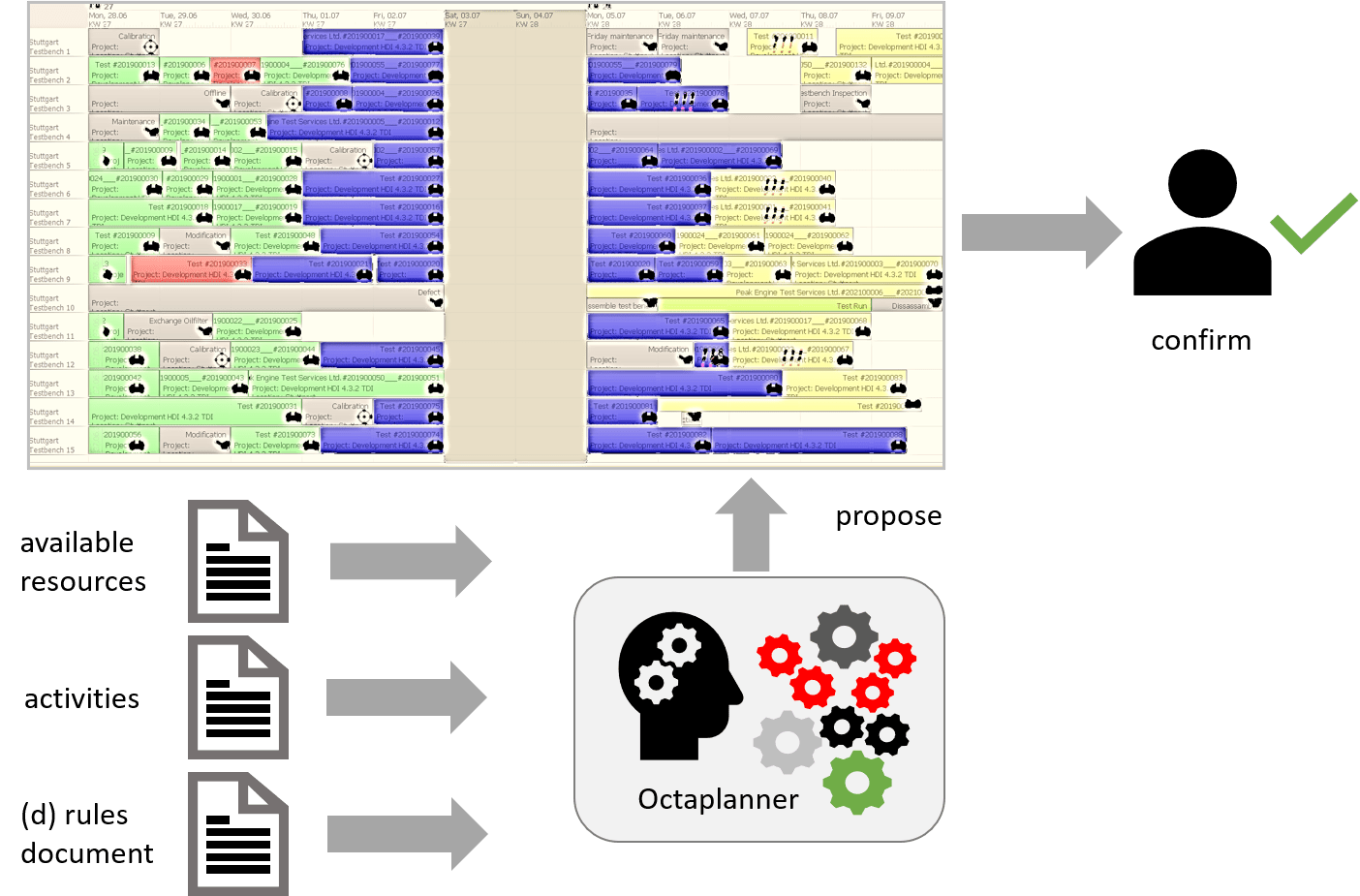Abo ut
Automation of complex planning tasks in the test field
It is increasingly difficult for test field managers to meet the requirements of customers on a flexible and timely execution of tests and at the same time to achieve a high utilization of cost-intensive test resources. The reason for this is the increasing number of test orders and limited test resources that must be linked together in a complex network of processes and dependencies.
Due to the complexity and existing target conflicts, optimal planning is usually not possible. However, by using appropriate algorithms, a planner can achieve better planning results in a timely manner than by manual procedures.
It is about solving the following planning problem:
- Competing planning targets exist. Examples include minimizing throughput time, maximizing the utilization of test resources, or maximizing the adherence to schedules.
- The available test resources are limited. Test resources are e.g. test stands, measuring equipment, test parts or staff.
- Different restrictions must be considered during planning. For example, working times, availability, location decisions or features of test resources.
Usually, restrictions in the test field have different priorities:
- Hard Restrictions: A hard restriction must not be broken. Example: A test bench cannot perform two different tests at the same time.
- Soft Restrictions: A soft restriction should not be broken if it can be avoided. Example: A company do not like to execute a specific kind of test at a particular location.
In addition, an appropriate algorithm must distinguish between negative and positive restrictions. While negative restrictions must not or should not be broken, positive restrictions should be met where possible. Example: A company likes to execute a specific kind of test at a particular location.

When solving a planning problem, score values can be assigned to the different types of restrictions. Thus, each solution of the planning problem can be rated with a score. The result of this rating is a number of solutions that can be classified into the following categories:
- Possible solutions: A possible solution is any solution, whether it breaks a number of restrictions or not. Planning problems in the test field usually have a very large number of possible solutions. However, many of these solutions are worthless.
- Realizable solutions: These solutions do not violate hard, negative restrictions. The number of realizable solutions is usually relative to the number of possible solutions. Sometimes there is no realizable solution.
- Optimal solutions: An optimal solution is the solution with the highest score. There is always at least one such solution, even if there is no realizable solution.
- Best solution: The best solution is the solution with the highest score, which is found within a defined period and which is realizable.
Peak Solution has developed an add-on for Peak Test Management Suite (Peak TMS), which automates the test problem described above. The add-on provides the user with algorithms to run through the large number of possible planning solutions in an efficient way. With the help of heuristics, scoring procedures and rules, the algorithms can find the best solution in an acceptable time. Of course, the algorithms can be flexibly adapted to individual requirements with just a few lines of XML code.
